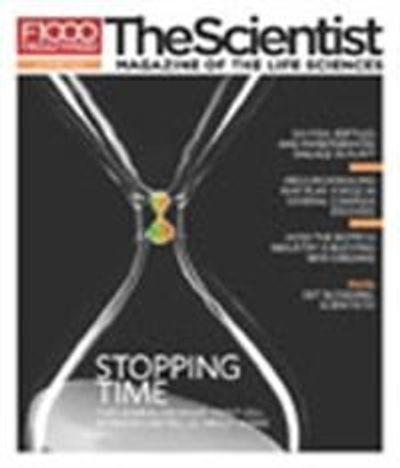Templates for a vaccine?
New tools for HIV-1 antibody-based vaccine design

The human immunodeficiency virus type-1 (HIV-1) continues its global spread, with an estimated 33 million people infected. The most cost-effective mechanism of infectious disease control is vaccination, but to date vaccine trials have had only modest success at reducing HIV-1 spread.1
However, antibodies that block HIV-1 infection, termed neutralizing antibodies (NAbs), are known to be effective in preventing HIV-1 infection. Unfortunately, current vaccines have been unable to induce the host to produce this type of antibody. The immune system mounts an immune response to HIV-1 that includes the production of...
One way around this problem is to direct the immune system to create antibodies that target regions of Env that the virus cannot afford to mutate, for instance, the surface subunit of Env, termed gp120,2 which allows the virus to dock onto the host cell’s CD4 molecule, a critical first step in entry. Other conserved regions of Env are also involved in viral entry, such as the gp41 Env subunit that induces fusion of the viral membrane with the cell membrane. Several neutralizing monoclonal antibodies (NMAbs—NAbs of a single specificity) of human origin were discovered over a decade ago that associate with these conserved regions of Env. Much interest has been generated by the idea that antibodies such as these might be used as tools for vaccine design.
Relatively recently, the concept of using NMAbs as templates for antibody-based vaccine design has emerged in the field. The idea is to engineer a piece of protein that mimics the segment of the antigen to which the antibody binds (called the epitope), and therefore looks like an isolated segment of the original antigen.3,4 If researchers could define the structural characteristics of the portion of Env that binds the NMAb, then they could generate a protein with an epitope that binds the NMAb using current protein engineering techniques. This protein epitope could then be used as a vaccine that elicited specific and evolution-resistant viral antibodies.
Until this past year, only four NMAbs were available. Although the antigen binding regions of all these NMAbs are structurally defined and have been excellent prototypes for studying neutralization, each one had specific structural and biochemical problems that made their use as templates for vaccine design difficult.4 Also, it is unlikely that an antibody response trained against the shape of one binding region would protect against all possible virus variants—a caveat that potentially limits the breadth of such a vaccine.
The breakthrough that has come in the past year is the isolation of new human NMAbs that neutralize a broad spectrum of HIV-1 strains, and therefore must bind to conserved regions of Env. The first such novel specificities were reported by Dennis Burton and colleagues at the Scripps Research Institute in La Jolla, in the form of two related NMAbs (PG9 and PG16) that neutralized approximately 80–90 percent of representative HIV-1 strains with potencies approximately 10-fold greater than the previous NMAbs.5 They were cloned from B cells of an HIV-1–infected individual with an unusually broad serum neutralization activity, and were found to bind complex epitopes only present on the functional, membrane-anchored Env structure rather than on soluble engineered mimics of Env. A second NMAb (HJ16), which neutralizes approximately 35 percent of HIV-1 strains, can be robustly expressed on a soluble engineered form of gp120 under various conditions, suggesting that it may be particularly amenable for use as a template in vaccine design. Finally, two very recent studies report on the isolation of three NMAbs (VRC01, 02, and 03)7 that neutralize up to 90 percent of circulating strains of virus at low concentration. Such potent and broad neutralizing activity in HIV-1–infected individuals gives hope that vaccine antigens based on one or a few epitopes may be sufficient to protect the majority of the population from infection.
The challenge now is to translate this information into a functional vaccine: this will require cutting-edge antigen design technology using structural biology associated with molecular modelling, genetic engineering and high-quality biochemical purification and characterization of the resulting antigens. This process will need to be associated with a better understanding of how to optimize the antibody response to HIV-1 Env. For example, we do not understand the relationship between the surfaces exposed on an antigen (“antigenicity”) and the ability of those surfaces to elicit the desired immune response (“immunogenicity”). Fortunately, the intense international research focus on all elements of this problem are yielding progress, and the next 5 years will reveal whether template-based design will fulfill its potential in the context of HIV-1 vaccine development.
Quentin J. Sattentau is from the Sir William Dunn School of Pathology, University of Oxford, and F1000 Section Head Andrew J. McMichael is from the Weatherall Institute for Molecular Medicine, University of Oxford.
This article is an adaptation of an article published in F1000 Biology Reports, a publication of the Faculty of 1000. For the full-length version, click here. F1000 Biology consists of more than 2,000 leading biologists (Faculty Members) who select and review the most important published papers in their respective fields (Faculties).
Interested in reading more?




